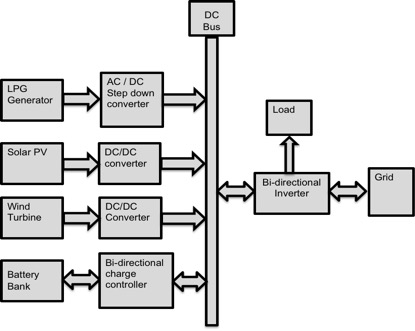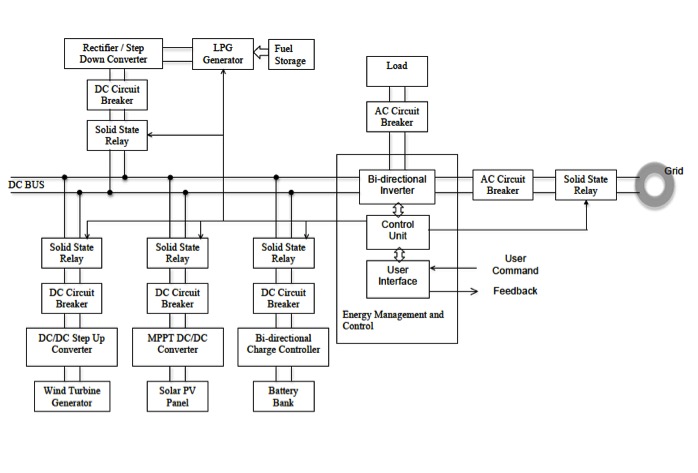Difference between revisions of "Projects:2018s1-180 Development and Control of a Standalone Power Source for Residential Dwellings and Small Businesses"
| Line 46: | Line 46: | ||
'''3. System at a glance''' | '''3. System at a glance''' | ||
-------------------------- | -------------------------- | ||
| + | [[File: Sys_config.jpg |border|Basic System Configuration]] | ||
| + | |||
| + | |||
'''6. Members''' | '''6. Members''' | ||
Revision as of 20:04, 19 October 2018
Content
1.Introduction
1.1 Motivation and Aim
1.2 Background
2. Hybrid system configuration
3. System at a glance
6. Members
6.1 Group Members
6.2 Supervisor
1.Introduction
1.1 Motivation and Aim
Obvious to say that most of us do not like power outage as it causes discomfort and financial losses as was witness in the recent case of South Australia, where some areas were without power for days. As a consumer what we want is a cost effective reliable power and hence the project aims to design, develop and implement a Nano-grid level reliable and cost effective power/energy source, for residential and/or small business application.
1.2 Background
Due to the increasing cost of non-renewable energy and extension of power grid, and to reduce green house gas emissions, development of hybrid power system with a mix of various energy sources presents a very viable alternative. Consumers would greatly benefit from the use of these hybrid power systems that are reliable and cost effective.Distributed energy resources entities such as solar photovoltaic units, wind-generating units and battery storage unlike centralised energy resources like power plants have the advantage of providing cheaper, more reliable and greener energy. It also provides more controlled for the consumer over the power generated.
A nanogrid is a standalone hybrid generation system, which utilizes distributed renewable and non-renewable energy resources with or without energy storage, and is used to supply power to a single user.
2. Hybrid system configuration
DC common bus architecture avoids the issue of AC synchronization of each energy sources related with AC common bus architecture. This design can also eliminate relatively complicated parallel operations of AC-DC bus configuration.
Using DC systems makes sense as most of the renewable sources generate DC power and the multiple energy conversions to generate AC supply results in energy losses, and it eliminates the need for expensive inverter system. And there is growing trend for DC appliances.
3. System at a glance
6. Members
6.1 Group Members
Bikram Thapa
Mo Tao
Yihan Cao
6.2 Supervisor Assoc. Professor Nesimi Ertugrul

